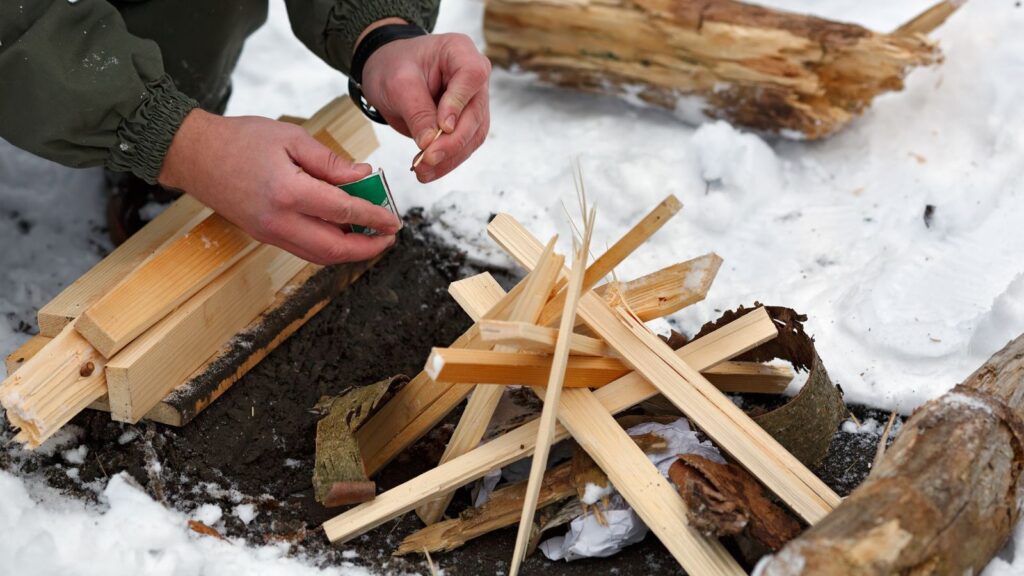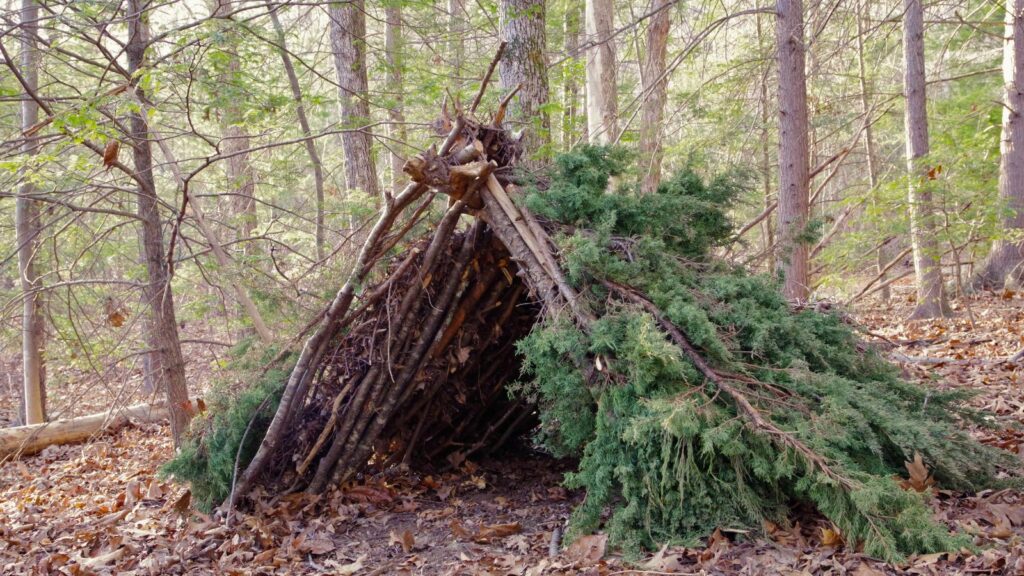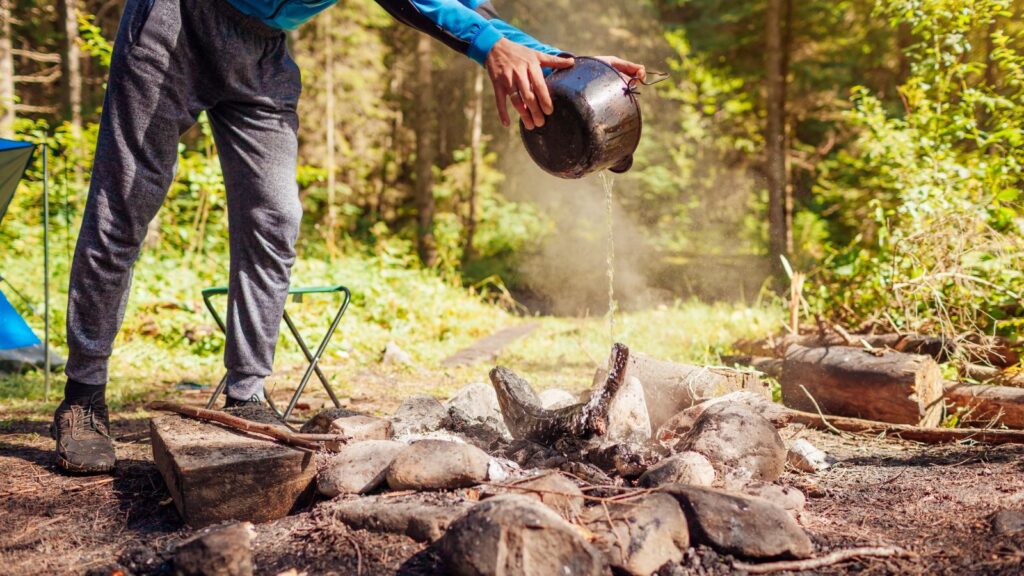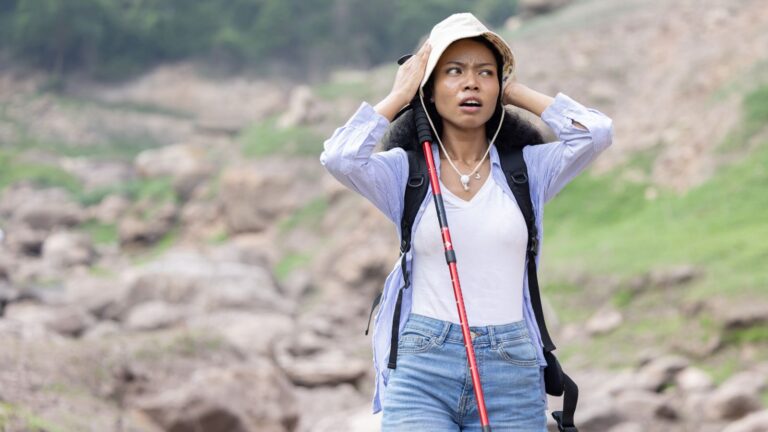While getting lost in the wilderness may seem like a remote possibility, being prepared with the right skills can make all the difference in a survival situation. Knowing how to identify safe plants to eat, create a shelter, and navigate your surroundings are just a few of the essential techniques that can help you stay safe if you ever find yourself in an unexpected predicament. This article provides a list of practical survival skills that could prove invaluable in the event of an emergency.
Identifying Edible Plants

Popular Science says, “Despite what many people believe, most vegetation in forests is safe to consume.” This is a relief, but it’s still best to familiarize yourself with local plant life. If possible, carry a regional plant guide with you. You should also study toxic plants that resemble edible ones.
Choosing the Right Fuel for Fire

In wilderness survival, fire is a fundamental tool, and choosing the right fuel is critical. Begin with tinder—small, easily ignitable materials like dry grass or birch bark. Next, add kindling such as small branches, which burn hot and quick. Finally, incorporate fuelwood, larger branches, or logs to sustain and stabilize the fire for longer periods.
Hunting and Trapping Techniques

If some time has passed and you’ve run out of any food you may have had on you, you’re going to want to try hunting to ensure you have something to eat. Use snare traps for small animals and employ fishing with hooks, lines, or handmade nets.
Understanding Local Wildlife

Prior knowledge of the local wildlife is crucial for wilderness survival. Research the behavior and patterns of common animals in the area to minimize risk. Learn to recognize signs like animal tracks or droppings to anticipate encounters and avoid danger. Respecting wildlife and keeping a safe distance are key practices for both your safety and the conservation of natural habitats.
Basic First Aid Knowledge

You don’t have to be a doctor, but brushing up on your first aid knowledge while you have the chance will help you if you ever find yourself lost or injured. Learn to treat bites, stings, and common injuries. It’s also smart to know how to address hypothermia or heat stroke. If possible, always carry a well-stocked first aid kit.
Mental Preparedness

The USFS advises, “If you do become lost your most important tool is keeping a positive mental attitude. As soon as you realize you may be lost: stop, stay calm, stay put. Panic is your greatest enemy.” Try to develop techniques now for maintaining a positive mindset and cultivate resilience to handle unexpected situations.
Rope Skills

Rope skills are vital in the wilderness for tasks ranging from securing shelters to emergency rescues. A proficiency in knot tying and handling ropes can be lifesaving in situations like rappelling or constructing improvised bridges. Practice these skills regularly to ensure you’re prepared for any situation where rope work might be necessary.
Maintaining Hygiene

It may not be the first thing on your mind if you find yourself lost in the wild, but you’ll be glad you know how to stay clean in this situation. Good personal hygiene is key in this type of disaster to prevent illness. Learn to find natural resources for cleaning and use sunlight for sanitizing clothing.
Self-Defense Knowledge

In remote areas, self-defense skills can be crucial, especially for solo adventurers. Knowledge in this area increases confidence and provides a sense of control in unpredictable environments. Whether dealing with wildlife or human threats, being equipped with self-defense techniques is an important aspect of wilderness preparedness.
Improvised Wilderness Medicine

It’s a good idea to learn how to address injuries with limited supplies and how to use natural resources for medical aid. Try to familiarize yourself with emergency treatment methods by researching and practicing at home. If you regularly take trips out into the wilderness, however, Outdoors.com recommends you get professional training.
Building a Shelter

Shelter is one of the most important things you’ll need when lost, so spend your free time now practicing constructing shelters with natural materials. Learn different types, like debris huts and lean-tos, and ensure you can build a shelter that is safe and protected.
Water Procurement and Purification

Securing a safe water source is a critical survival skill in the wild. Water not only sustains life but also aids in food preparation and hygiene. You’ll need to locate a water source, such as a river, lake, or stream, employ purification methods (such as boiling or using purification tablets), and do your best to store the liquid in clean containers.
Outdoor Safety Awareness

Being aware of potential outdoor hazards is crucial for wilderness safety. This includes recognizing risks posed by wildlife, weather conditions, and unstable terrain. Effective safety measures involve understanding how to respond to wildlife encounters, preparing for various weather conditions, and letting someone know your travel itinerary.
Navigation Without a Compass

Unless you’re living your life carrying a compass along with you on a daily basis, chances are that you aren’t going to have one if you get lost. So, it’s important to learn how to navigate without one. Use the sun to determine east and west, follow natural markers like rivers and animal trails, and observe the stars and the moon for navigation.
Creating a Signal Fire

If lost, you’re going to want to do everything possible to be found. This means you should know how to create a signal fire. As shared by Instructables, “Burning natural materials such as wood and leaves will create white smoke, but if you want a black or dark gray smoke signal, use rubbers and plastics.” Gather dry materials like leaves and twigs to get your fire started and keep it burning until rescued.
Making Noise for Signaling

If you’re lost somewhere where you can’t easily be seen, you’ll want to continuously make noise to help people find you. Yell, scream, bang on an object, or blow a whistle. It’s a good idea to use a pattern or rhythm to signal human presence. You should also coordinate noise-making with others if you’re in a group.
Visual Signaling Strategies

Likewise, visual signals are important when lost in the wild. Use visual signals like mirrors, flags, or fire arrangements (such as in recognized distress patterns). These methods increase the likelihood of being located by rescuers, significantly enhancing your chances of survival in emergency situations.
Fire Safety

We’ve already mentioned that it’s a good idea to learn how to build a fire, but it’s also important to know how to keep safe around one. Always maintain a safe distance from the fire, never leave it unattended (including falling asleep close to it), and ensure it’s fully extinguished before departing to prevent wildfires.

